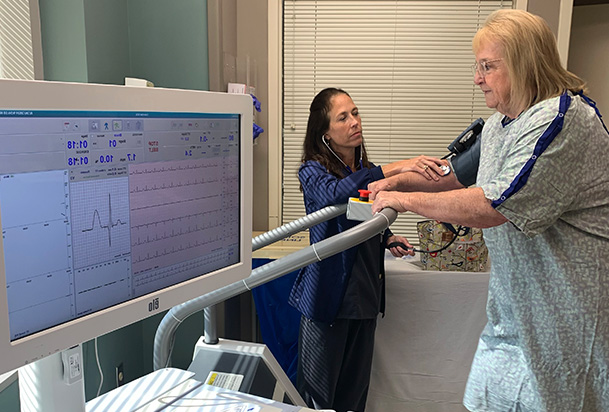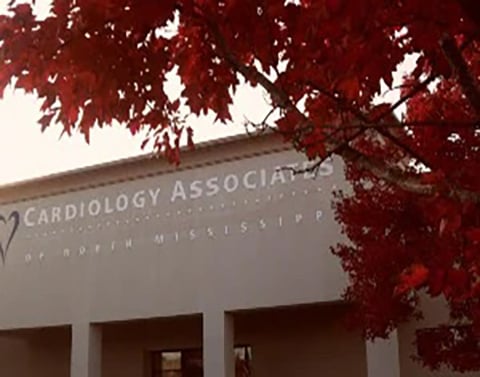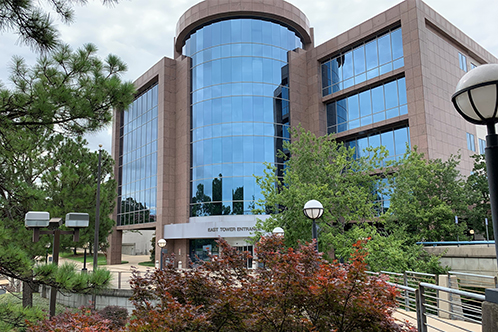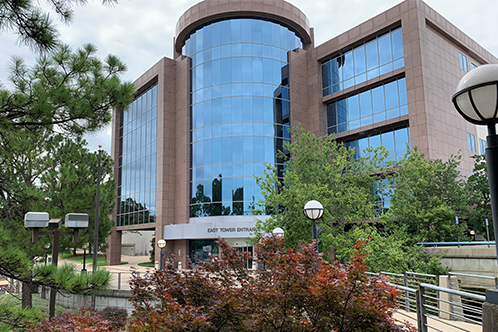- Home
- Medical Services
- Heart and Vascular Care
- Screening and Testing

Heart & Vascular Screening & Testing
The best way to lower your risk of cardiovascular disease is to start by identifying your risk factors. Then, you can make positive changes.

Danger Ahead?
Sometimes you just need a heads up that trouble may be lurking ahead. We can help you identify potential issues and stop them in their tracks.
Heart Screening
You can schedule a screening for only $95* to help identify your risks for heart disease. A heart screening involves three simple tests: CT calcium scan, EKG and lipid profile. Request an appointment online or call 1-800-843-3375.
Cardiac Catheterization
Cardiologists use cardiac catheterization to gather information on the valves, chambers and arteries, as well as the heart's structure and function. This procedure can show a physician the precise location of a blockage or defect. Cardiologists can use special balloon catheters and stents to open blockages in the arteries supplying blood to the heart. NMMC was among the first hospitals in the nation to offer drug-eluting stents to reduce the rate of re-blockage.
Echocardiography
Echocardiography is a technique that sends sound waves into the chest to rebound from the heart's walls and valves. The recorded waves show the shape, texture and movement of the valves on an echocardiogram.
Echocardiograms provide information about heart muscle contraction, valve motion, blood clots in heart chambers and scar tissue from heart attacks. The Intersocietal Commission for the Accreditation of Echocardiography Laboratories has accredited NMMC for adult transthoracic, adult stress and adult transesophageal echocardiography.
Electrocardiography
Electrocardiography helps determine if the heart has been damaged. Also called ECG or EKG, an electrocardiogram is a graphic record of the heart's electrical impulses. Several wires, or "leads," are attached to the arms, legs and chest to take 12 different recordings at the same time. Each lead records the same electrical impulse, but from a different position in relation to the heart.
Exercise Stress Test
A stress test, sometimes called a treadmill test or exercise test, helps physicians find out how well the heart handles work. During an exercise stress test at NMMC's Heart & Vascular Institute, you wear a heart rhythm monitor and walk on a treadmill while a physician supervises. This exercise stresses the heart and allows the physician to check your heart rhythm, as well as how the coronary arteries respond to increased demand.
Nuclear Stress Testing
NMMC's Nuclear Cardiology Laboratory evaluates how well blood flows to the heart muscle by using small amounts of radioactive materials. Nuclear cardiology can help identify patients who might benefit from angioplasty or bypass surgery. Images provided by special cameras detect heart disease, especially coronary artery disease. Nuclear imaging procedures are performed along with exercise or pharmacological stress testing.
Treadmill stress testing helps assess performance of your cardiovascular system and detects coronary artery disease.
Pharmacological stress testing is provided for patients who cannot exercise.
Holter Monitoring
Holter monitoring detects abnormal heart rhythms by recording your heartbeat during a 24-hour period. You keep a diary of your activities while wearing the holter monitor, which consists of electrodes connected to your chest and a special recorder worn around your waist. After 24 hours, you return the holter monitor to the NMMC Heart & Vascular Institute, where a technician scans the tape for a physician to interpret.
In some situations, you wear a cardiac monitor that is like a holter monitor but that allows you to press a button to activate the event recorder during a cardiac rhythm disturbance, like a racing heart. With this monitor, you send cardiac event data from the recorder by telephone for immediate evaluation.
Teletrace
Teletrace uses telephonic monitoring to help identify early signs of possible pacemaker failure. The Heart & Vascular Institute loans a transmitter to each pacemaker patient so that functions can be checked each month through a telephone connection. The transmitter and telephone send a one-lead EKG/ECG to the Teletrace office in the Heart & Vascular Institute. A Teletrace technician prints a copy of the test, which a physician interprets.



